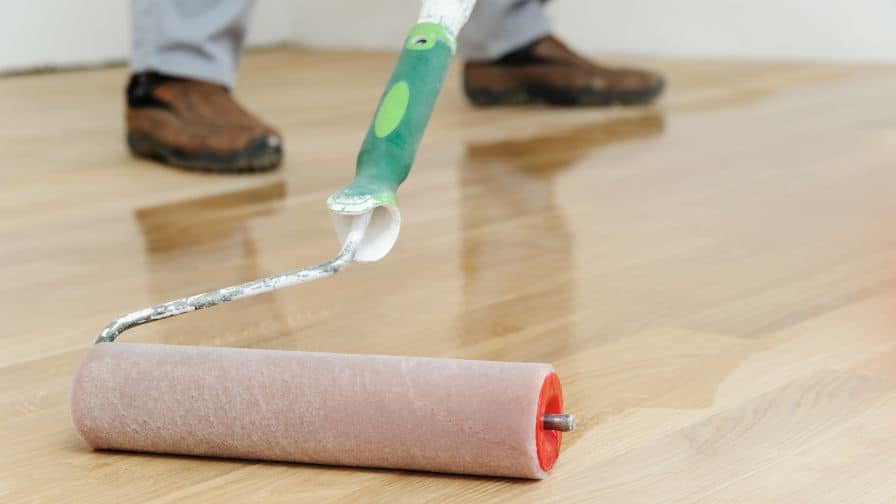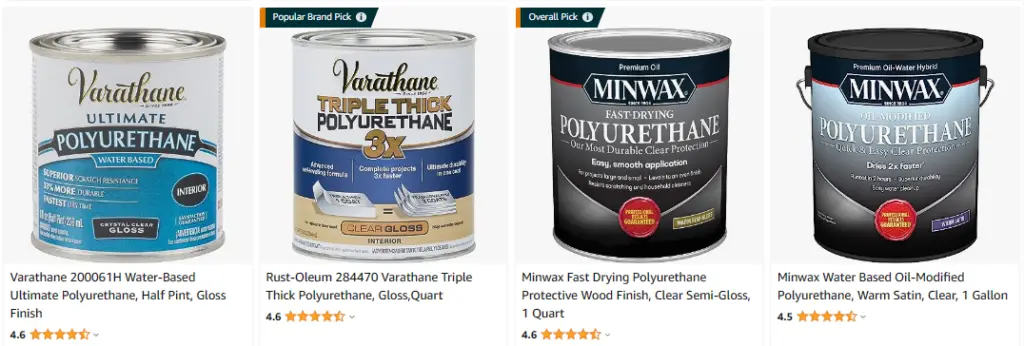
Polyurethane is a popular choice for coating wood because it is durable and provides a high-gloss finish. However, applying polyurethane in high humidity can be tricky. In this blog post, we will discuss some tips and tricks that will help you apply polyurethane in humid environments without any problems!

Click Here To Check The Pricing On Amazon
What Is Polyurethane And Why Is It A Popular Choice For Coating Wood?
Polyurethane is a type of synthetic resin that is often used as a coating for wood. It is available in both oil-based and water-based formulations. Polyurethane is popular because it is durable and provides a high level of protection for the underlying wood. It also has a nice lustrous finish that can enhance the appearance of the wood.
One of the challenges with applying polyurethane is that it can be sensitive to humidity. If the relative humidity is too high, the polyurethane will not cure properly and will remain tacky. This can lead to several problems, such as bubbles in the finish, dirt collecting on the surface, and premature wear.
How Can You Apply Polyurethane In High Humidity Without Any Problems?
High humidity is often a problem when trying to apply polyurethane. The moisture in the air can cause the polyurethane to foam and not cure properly. There are a few things you can do to make sure your polyurethane turns out great, even in high humidity conditions.
First, try applying the polyurethane in a smaller area. This will help to control the amount of moisture that is in the air and on the surface you are working on.
Second, use a dehumidifier in the room where you are applying the polyurethane. This will help to remove some of the moisture from the air and make it easier to apply the polyurethane.
Third, make sure the surface you are applying the polyurethane to is clean and dry. Any moisture on the surface will make it harder for the polyurethane to adhere properly.
Fourth, use a fan to help circulate air in the room. This will help to remove any moisture that is in the air and make it easier to apply the polyurethane.
By following these tips, you should be able to apply polyurethane in high humidity conditions without any problems. By taking the time to prepare for the job, you can ensure that your polyurethane will turn out great and last for many years to come.
What Are Some Tips And Tricks For Applying Polyurethane In Humid Environments?

If you’re planning on applying polyurethane in a high-humidity environment, there are a few things you should keep in mind.
Here are some tips and tricks for getting the best results:
- Make sure the area is well-ventilated. Apply the polyurethane in thin coats to avoid runs and drips.
- If possible, apply the polyurethane in the morning or evening when the humidity is lower.
- Use a dehumidifier to keep the air in the room dry.
- When applying an oil-based polyurethane, thin the first coat with mineral spirits to help it level out better.
Following these tips will help you achieve a smooth, professional-looking finish on your project. Polyurethane is a great way to protect your woodworking projects from the elements. With a little bit of care, you can get great results in any environment.
Are There Any Other Ways To Protect Wood From Humidity-Related Damage Besides Using Polyurethane?
Yes, there are a few other ways you can help protect your wood from humidity-related damage.
One way is to use a dehumidifier in your home or office. This will help to remove any excess moisture from the air and keep your wood nice and dry.
Another way is to make sure that you finish your wood with a waterproof sealer. This will help to create a barrier between the wood and any moisture that may come into contact with it.
Lastly, you can also try storing your wood in a cool, dry place. This will help to keep the moisture content of the wood low and prevent it from swelling or warping.
So there you have it! A few tips and tricks to help you apply polyurethane in high humidity. By following these tips, you can help ensure that your wood is protected from the damaging effects of moisture. So don’t wait any longer, get out there and start finishing your projects!
Is Polyurethane Affected By Humidity?
Yes, polyurethane can be affected by humidity–but there are ways to combat this. By following a few simple tips, you can ensure that your polyurethane finish turns out just the way you want it to, regardless of the humidity levels.
What Is Too High Humidity For Painting With Urethane?
Subscribe to Home Built Workshop
It is ideal to apply polyurethane when the humidity is between 40 and 50 percent. However, you can apply it in high humidity if you take some precautions. First, use a dehumidifier to lower the humidity in the room where you will be working. Second, make sure that the surface you are painting is clean and dry. Third, apply a thin coat of polyurethane and let it dry for 24 hours before applying a second coat. fourth, if the humidity is still high after you have applied the first coat, wait an additional 24 hours before applying the second coat.
If you follow these tips, you should be able to apply polyurethane in high humidity without any problems. Just be sure to take your time and work slowly to avoid any mistakes. Good luck!
Is It OK To Stain In High Humidity?
It’s not ideal, but you can stain in high humidity if you’re careful. The key is to apply a light coat and allow it to dry completely before adding another layer. If the humidity is too high, the stain will take longer to dry and may not adhere properly.



